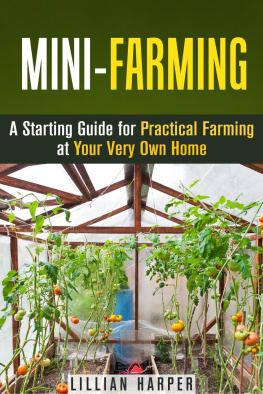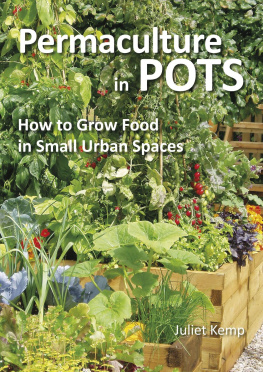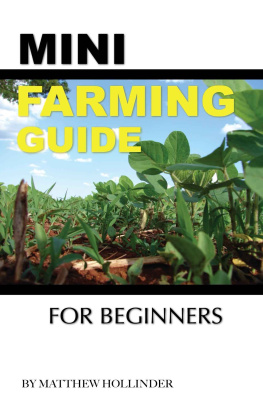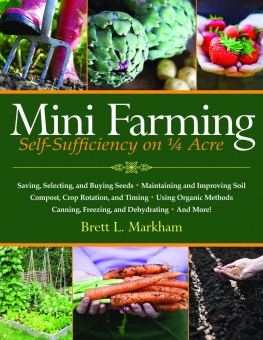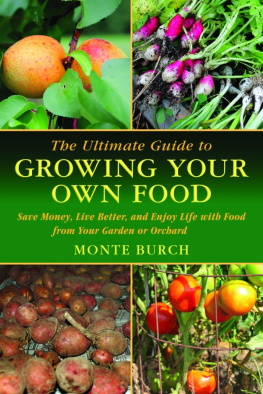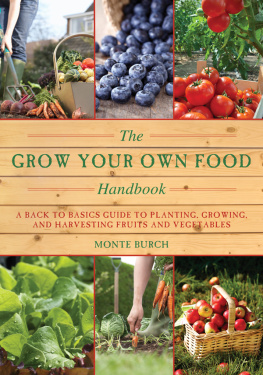Mini-Farming
A Starting Guide for Practical Farming at Your Very Own Home
Copyright Notice
Reproduction, duplication, transmission of this document in part or in whole is permitted only with written permission from the publisher. All rights reserved.
Respective brands and trademarks mentioned in this book belong to their respective owners.
Disclaimer
This document is geared towards providing summarization of information related to the topic. While all attempts have been made to verify the accuracy of the information, the author does not assume any responsibility for errors, omissions, or interpretations of the content. The information is offered for informational or entertainment purposes only. If professional advice is necessary, a qualified legal, medical, financial or another respective professional should be consulted. The reader is responsible for his or her own actions. The publisher does not accept any responsibility or liability arising from damages or losses, real or perceived, direct or indirect, resulting from the use of this information.
Table of Contents
Introduction

B ack in the old days, the family farm was the thing and often the big thing. It was not uncommon for even poorer families to have at least 10-20 acres, and some farms could stretch for hundreds of acres or more. As times changed and people started moving toward other lines of work, the family farm got smaller out of necessity. Times got tight, and bits and pieces of these larger farms would be sold off to keep the family afloat. These days large yards which are often not even an acre are a selling point in the suburbs while little blots of dirt are called yards in more urban settings. The family farm had become a distant memory, relegated to the past.
But, in recent years something has happened. People are starting to question the chemicals and additives in their foods. Organic foods went from being the quirky collection of foods in the corner of the grocery store to being a major business. Organic foods may be safer but they are also more expensive, and the average family cannot afford to choose between good health and staying on a tight budget. Those families started exploring ways to grow their own foods even when they had very little land to work with. Mini-farming is the answer to their concerns and has increased in popularity.
My family has always had a garden. All of the relatives on my dads side of the family have had gardens even my aunt who lived in an apartment in a very urban city. There has only been one time in my own life that I did not have a garden for myself, and it was more of a lack of time rather than a lack of space that held me back. I now have two acres of land with some major challenges but manage to do fairly well with plants of various kinds and some smaller animals. I am even thinking of branching out to some mid-size animals since I have the space now. Let me show you what I have done and what I have learned from others over the years. Trust me there is nothing better than eating foods that you have grown for yourself.
Chapter One: Small, Very Small and Micro-Mini: Work with What You Have

I n this chapter, you will learn:
- Small backyard plans
- Patio and balcony planting
- Postage stamp orchard plans
Mary, Mary Quite Contrary...
M y dads family had always had farms or at least gardens even when they barely had yards to work with. One of his aunts lived in a dark and dreary apartment in a major city but still grew tomatoes, onions and several types of herbs. The woman also had decorated every inch of that apartment with cat related items, but that is entirely another story. How did she do it? She had a single, small window in the kitchen and one that sat high up in her bathroom- the plants were placed in cute little buckets that were hung over the window sill. On nice days, they hung outside. On cooler days, they hung inside, and the plants went to the two windows on various days. Her crops were always bountiful.
Then there was my fathers great aunt or as we called her scary tante. She had a smallish yard broken up by assorted sheds and outbuildings plus some poorly thought out sidewalks, but she made it work for her. Oh boy, did she ever! One year she grew so many zucchinis that she had to call several churches to come and pick up the extras; she was totally out of room in her freezer and her cold cellar. Another year she grew a green bean that was so outrageously huge that her son preserved it and then hung it on the wall. My sister, always convinced that this aunt was a witch was mortally afraid of that bean and offered it as her concrete proof that her beliefs were well-founded. She worked the yard well into her eighties. Her son carried on the gardening after the aunt was no longer able to get out there, but she cooked, canned and froze up whatever prizes that the yard was churning out.
My dad moved from his home state shortly after marrying my mother. They lived in tiny apartments in various cities as they traveled north, following the jobs. Eventually, he found a very good job at a car manufacturer and soon after they moved to the suburbs. Now, this is part of the family lore that will only cease to be funny when there is no one left to tell the tale. Dad wandered off on his own one day and came back with great news! He had bought a house. Nope, he did not find a house that he thought mom might like. He had bought the house. His reason was simple- he fell in love with the backyard. It was no matter that the house was too small. He loved that backyard. We moved into the house in October, and he spent the rest of that fall and winter planning. Being a man of few words, he did not say what he was planning but by the first peaks of spring we knew.
The typical suburban yard can handle a fairly substantial garden if it is plotted out carefully. Remember, gardens grow best when they are properly prepared and tended, and you will have the greatest success if you rotate what you grow and where it is placed in the garden every year. The first thing that you need to do is to honestly assess how much room you have to work with.
Divvy up the Land: Garden, Kids and Pets (Oh My!)
In the first part of your plan you will have to look at your yard with super realistic intentions- sure you want a koi pond, a lush garden, flowers and a gazebo but are you the only one heading out to that yard every day? If you have pets and children in any combination, you will have to allot them some space of their own. Then there are the other uses that you will have to keep in mind. Remember, yards are also for entertaining and such. My father had his garden in the back section of the yard that he shared with 2 children, 1 dog of our own plus 2 more from next door who liked to visit. He also had a horseshoe pit, a large swimming pool, a grill/picnic table area and my moms backyard swing. Ours was the house for entertaining and activity, and none of that detracted from his gardening. Every year we were beset by green onions, tomatoes, cucumbers, zucchinis, and watermelons. He also kept a row or two of sweet corn and some additional plants that caught his fancy when he was buying his seeds and plants for the coming season. Off to one side of his garden was a small stand of raspberry canes and on the other side was rhubarb.
Be sure to include everything that you might possibly use your yard for when making garden plans. At this time, my dad lives alone so his garden could by rights be much larger. There are ways to plant your garden to make the most of the space available plus there are always options to move some plants to other locations. Dad had great success with strawberry plants that grew in hanging baskets that he strung along the fence line.
Next page
